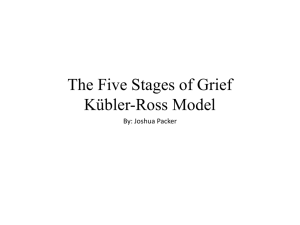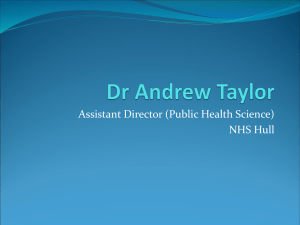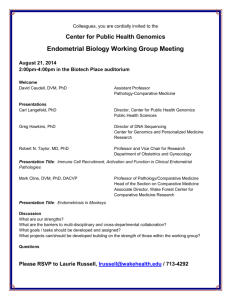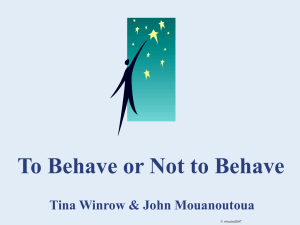Phases-of-Change
advertisement
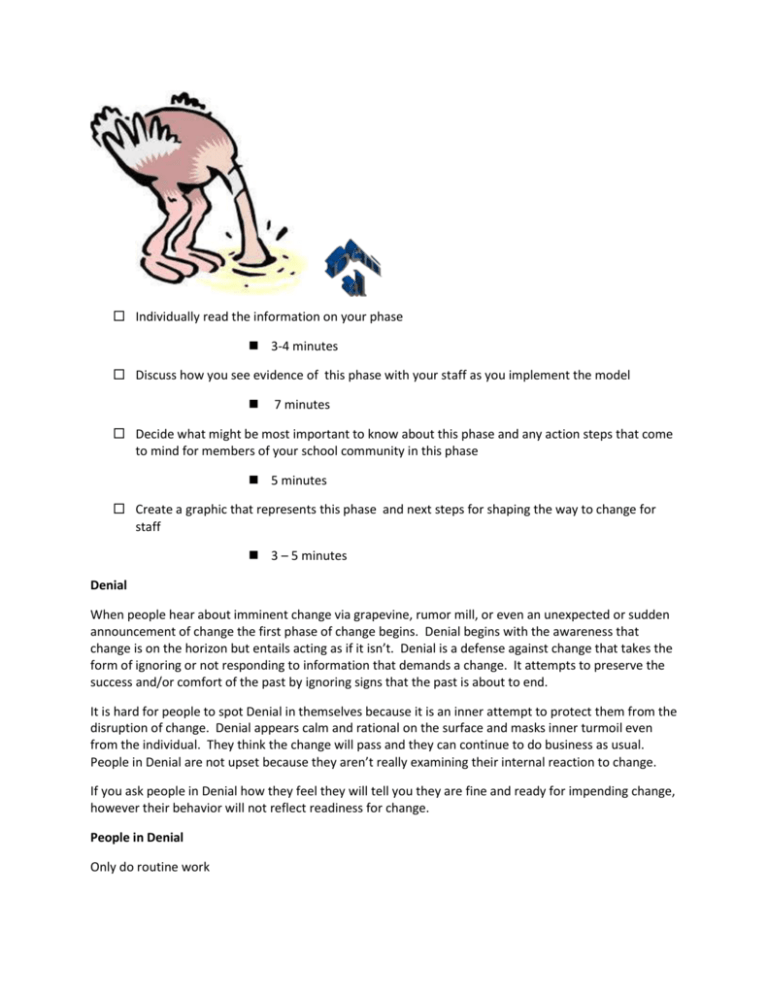
Individually read the information on your phase 3-4 minutes Discuss how you see evidence of this phase with your staff as you implement the model 7 minutes Decide what might be most important to know about this phase and any action steps that come to mind for members of your school community in this phase 5 minutes Create a graphic that represents this phase and next steps for shaping the way to change for staff 3 – 5 minutes Denial When people hear about imminent change via grapevine, rumor mill, or even an unexpected or sudden announcement of change the first phase of change begins. Denial begins with the awareness that change is on the horizon but entails acting as if it isn’t. Denial is a defense against change that takes the form of ignoring or not responding to information that demands a change. It attempts to preserve the success and/or comfort of the past by ignoring signs that the past is about to end. It is hard for people to spot Denial in themselves because it is an inner attempt to protect them from the disruption of change. Denial appears calm and rational on the surface and masks inner turmoil even from the individual. They think the change will pass and they can continue to do business as usual. People in Denial are not upset because they aren’t really examining their internal reaction to change. If you ask people in Denial how they feel they will tell you they are fine and ready for impending change, however their behavior will not reflect readiness for change. People in Denial Only do routine work Fail to be very curious or look outside their narrow area of responsibility Focus on little details Blame external forces/others for difficulties Question data or process used to make decisions To help move people through denial conversations may focus on: Clarity regarding the need for change Clarity about the expectations for the individual and their role and responsibilities Providing an opportunity for people to express their feelings about the change, so they can acknowledge them and move forward. School members in the denial phase need information about “why” the change is happening. They need specifics about what will be expected in their individual role and clarity around what they know and what they need to know. Sources – Mastering the Change Curve – Dennis T. Jaffee PhD – Cynthia Scott PhD Managing Transitions – Making the Most of Change – William Bridges Individually read the information on your phase 3-4 minutes Discuss how you see evidence of this phase with your staff as you implement the model 7 minutes Decide what might be most important to know about this phase and any action steps that come to mind for members of your school community in this phase 5 minutes Create a graphic that represents this phase and next steps for shaping the way to change for staff 3 – 5 minutes Resistance Once people “wake up” from Denial they feel their emotions of upset. The change may be perceived as deeply disruptive and personally upsetting. Resistance is the experience of being in-between the comfortable and the unfamiliar while anticipating the future. The phases are not linear and resistance may reoccur even after the change had been accepted when people feel discouraged or disillusioned. During a change, people feel a sense of loss it maybe loss of status, power, influence, comfort, value, expertise, meaning…… When people are in resistance they make express doubt about the organizations ability to handle the change, concern over new roles or responsibilities, concern over added work. People in Resistance Want to know What about me? Why me? (believe they are treated unfairly) Display anger at and doubt toward the organization Complain – question the ability of higher levels o management Do not believe the task is possible Refuse to comply – may take form of “I am too busy”…”we have tried this before”…”we are waiting for further direction” Feel overwhelmed and depressed Everyone resists change. School members in resistance need reassurance that it is a natural part of the change process. Provide probing and clarifying questions and statements to help these school members make a paradigm shift from blaming others for the change (perceived as discomfort) and rationale for the changes being implemented. Sources – Mastering the Change Curve – Dennis T. Jaffee PhD – Cynthia Scott PhD Managing Transitions – Making the Most of Change – William Bridges Individually read the information on your phase 3-4 minutes Discuss how you see evidence of this phase with your staff as you implement the model 7 minutes Decide what might be most important to know about this phase and any action steps that come to mind for members of your school community in this phase 5 minutes Create a graphic that represents this phase and next steps for shaping the way to change for staff 3 – 5 minutes Exploration When people gain clarity that the change is necessary and important even though they may not personally welcome it they move into Exploration. They are open to thinking about possibilities. They are ready to make the best of it and learn new skills. This is a paradigm shift from seeing change as a threat to seeing it as an opportunity. This is a phase full of energy that requires direction and focus. People in Exploration Are full of energy Looking for new ways to implement, do, and think Create a vision for the future Desire to solve problems Will try new things and take risks During the exploration phase, change agents need to help people deal with implementing their responses. Even when an organization has done considerable planning, each individual and team will need to deal a great deal of planning on their own. This is when the change is accepted and there is active participation in making it successful. School members in this phase are seeking information and understandings that will help them develop new skills needed for the change. They need input to imagine what they are trying to create such as site visits, video clips, press articles, research etc. Sources – Mastering the Change Curve – Dennis T. Jaffee PhD – Cynthia Scott PhD Managing Transitions – Making the Most of Change – William Bridges Individually read the information on your phase 3-4 minutes Discuss how you see evidence of this phase with your staff as you implement the model 7 minutes Decide what might be most important to know about this phase and any action steps that come to mind for members of your school community in this phase 5 minutes Create a graphic that represents this phase and next steps for shaping the way to change for staff 3 – 5 minutes Commitment This phase is acceptance of the new way of operating. Individuals in this phase are capable of working effectively and motivated to achieve success. They are experiencing feelings of accomplishment, professional growth, and relief. Individuals have clarity about why they needed to move from the status quo and will not be willing to return to the old ways of operating. This may be characterized by a variety of emotions. People are once again willing to focus their attention on the external world and team needs rather than continuing to be tuned into WIFM (What’s in it for me?) They can do this because they have learned to become comfortable with new ways of working. People in Commitment Are confident and comfortable Feel accountable for results Focus on continual improvement Know what they are doing Commitment is a phase to be celebrated. It is an appropriate time to reflect on lessons learned and next steps. While commitment offers a brief respite from change it cannot be seen as a fait accompli. Sources – Mastering the Change Curve – Dennis T. Jaffee PhD – Cynthia Scott PhD Managing Transitions – Making the Most of Change – William Bridges




